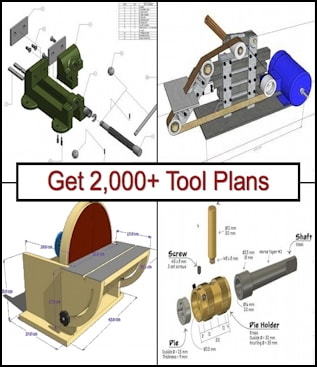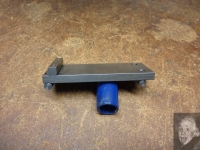Sinebars are usually thought of as measurement tools only, not to be used in actual machining operations. Before I got a set of good angle blocks, I decided that it would be a good idea to make a sinebar I could use to support work in the milling vise without having a massive guilt attack.
The design is simple. Two rollers bolted to the bottom of a 1" wide steel plate and a stop with chip undercut bolted to the top. I'm not going to cry if an errant endmill takes a bite out of it.
Is it as accurate as the high-priced version? Of course not, but it's very rare in our world of shade-tree machining that one needs to cut a super precise angle.
Assuming you use the same diameter stock for the rolls and take care to mount them parallel, the biggest accuracy issue is the distance between the rolls. It doesn't really matter what this distance is as long as you know it with some precision. Here's how to determine it...
Borrow an angle master plate (30 deg is a good size to use) and mount it on the sinebar. Build a stack under the sinebar until a DTI traced across the master shows no slope, ie, the sinebar angle is the same as the master angle (we'll call it A). Then L, the roll-to-roll distance is given by:
L = H/sin(A)
where H is the height of your stack.
For a full discussion of sine bar errors, see my thread...
http://www.homemadetools.net/forum/s...7695#post37510


 LinkBack URL
LinkBack URL About LinkBacks
About LinkBacks



 Reply With Quote
Reply With Quote




Bookmarks